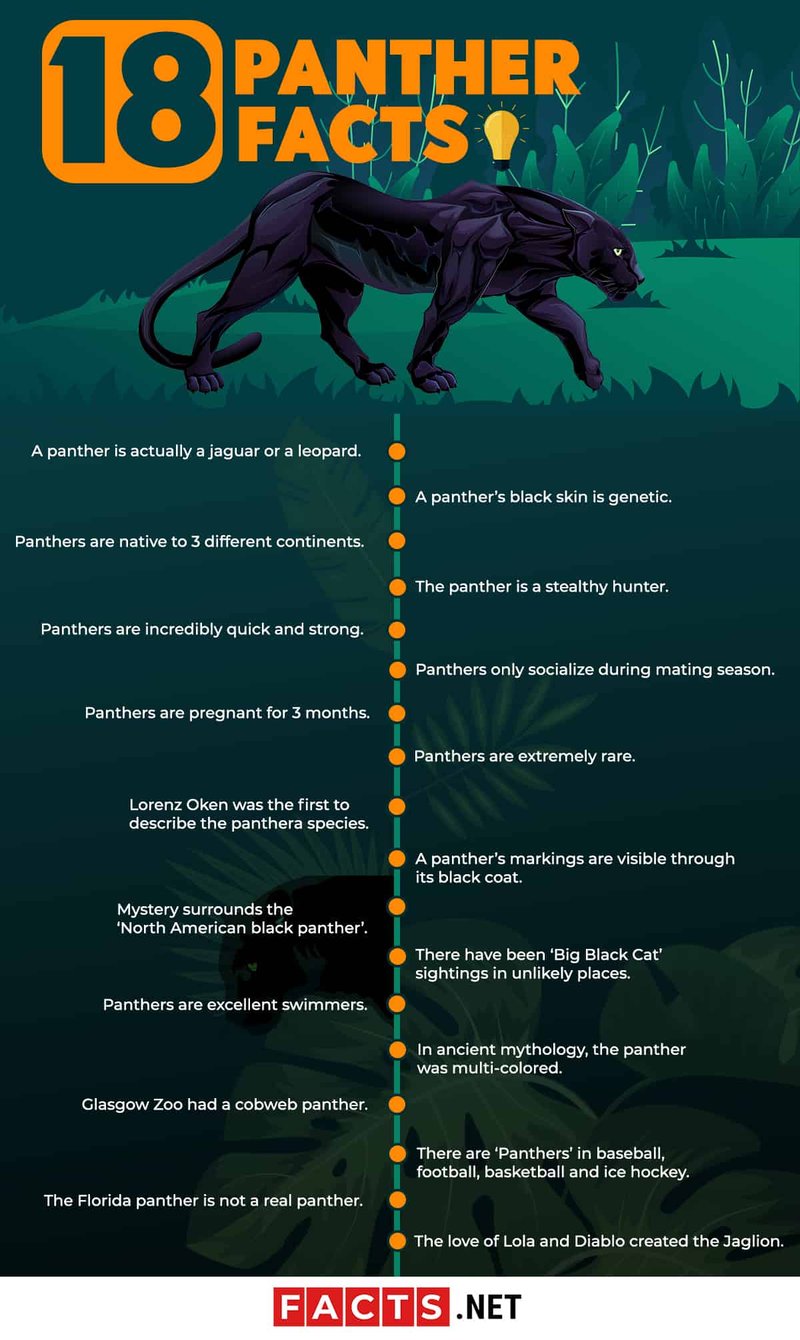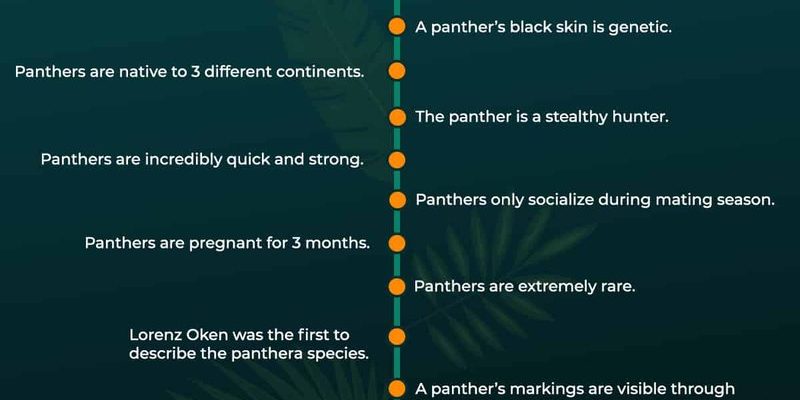
Understanding where panthers live isn’t just an animal trivia game; it plays a big role in their conservation and management. Knowing their habitats helps us to protect them and ensure their survival. So, let’s take a deep dive into the world of panthers—a journey through their homes, ranging from swamps to mountains.
Types of Panthers and Their Habitats
Before we get into the nitty-gritty of where panthers live, let’s clarify what we mean by “panther.” The term often refers to two primary species: the Florida panther and the black panther, which is actually a melanistic variant of other big cats like leopards and jaguars. Each of these panther types has its own unique habitat preferences.
The Florida panther, for instance, is primarily found in the forests and swamps of southern Florida. They thrive in habitats that are rich in palmetto and cypress trees. These areas provide the cover they need for hunting and raising their young. On the other hand, black panthers can be found in a variety of locations around the world—from the rainforests of Southeast Asia to the grasslands of Africa. Their adaptability is one of the reasons they thrive in so many environments.
You might wonder, “Why does this matter?” Well, understanding these habitats helps conservationists create better strategies for protecting panthers. It’s like knowing the best spots for a picnic—if you want to enjoy a great day out, you need to pick the right place.
Florida Panthers: The Endangered Subspecies
Let’s zoom in on the Florida panther. These incredible animals are a subspecies of the cougar and have become an iconic symbol of Florida’s wildlife. But sadly, their numbers are dwindling. They are considered endangered, with only an estimated 120 to 230 individuals left in the wild.
Florida panthers inhabit a range of ecosystems but are most commonly found in longleaf pine forests, hardwood swamps, and upland hardwood forests. These environments are crucial for their survival, as they provide food, cover, and space for breeding. The Big Cypress National Preserve and the Everglades National Park are two significant areas where these panthers roam.
The challenges they face are real. Habitat loss due to urban development and agriculture is a major threat. Imagine having your home gradually taken away—it’s a struggle for survival. Conservation efforts focus on protecting these habitats, enabling Florida panthers to flourish in their natural environment once again.
Black Panthers: Masters of Adaptation
Now, let’s talk about black panthers. While they are often associated with the term “panther,” they are not a distinct species. Instead, they are leopards or jaguars with an excess of dark pigmentation. You can find them in a wide range of habitats, from tropical rainforests to savannas and even mountain regions.
One of the fascinating things about black panthers is their adaptability. For instance, black leopards are more commonly found in the forests of India and Southeast Asia due to their ability to blend into shadowy environments. In contrast, black jaguars thrive in the dense jungles of Central and South America. Their color may help them camouflage, but it’s their flexibility that’s vital for their survival.
Again, you might ask, “What’s the big deal?” Well, understanding where black panthers live helps local conservation efforts. Different regions have different ecological needs, and knowing the specifics can aid in protecting these beautiful creatures.
Panther Habitats Across the U.S.
In the United States, panthers—primarily the Florida panther—can be found in specific regions. Their territory includes southwest Florida, particularly in the Everglades, where the wetlands provide a dense habitat. Meanwhile, cougars, which can also be referred to as mountain lions or pumas, inhabit a broader range across North America, extending from Canada to South America.
The western United States sees cougars roaming in various environments including mountains, forests, deserts, and even suburban areas. This variation means they can adapt to many different habitats, relying on their natural hunting instincts to survive.
In both cases, habitat preservation is crucial. As urban areas expand, the wild spaces that panthers depend on shrink. It’s kind of like trying to squeeze into a packed elevator—there’s just not enough room for everyone.
Threats to Panther Habitats
Despite their adaptability, panthers face significant challenges. Habitat destruction is a major issue, limiting their range and affecting their ability to hunt and breed. Urbanization, agriculture, and climate change are pushing these majestic animals into smaller and smaller areas.
Other threats include vehicle collisions and poaching. As panthers venture closer to roads in search of food or territory, the risk of getting hit increases. These threats highlight the importance of conservation efforts. By creating wildlife corridors and stricter regulations on land use, we can help panthers live more safely and thrive in their habitats.
Conservation groups are working hard to address these challenges, but it’s a community effort. Awareness and education about the importance of preserving panther habitats can make a huge difference.
Conservation Efforts to Protect Panthers
So, what’s being done to protect these incredible creatures? Numerous conservation programs are focused on preserving the habitats of panthers. In Florida, agencies work together to restore and protect land that’s essential for the Florida panther’s survival.
Efforts include creating wildlife corridors to allow safe movement between different habitats. It’s like opening up an all-access pass for these animals, helping them find mates, food, and shelter without fear of crossing dangerous roads.
Moreover, education plays a key role in these initiatives. Schools, parks, and conservation centers educate the public about the importance of panther conservation. Honestly, awareness is half the battle—if more people understand the issues, they can help advocate for better practices and policies.
The Importance of Protecting Panther Habitats
You might be asking, “Why should we care about panthers and where they live?” The answer is multifaceted. Panthers play a crucial role in their ecosystems, helping keep populations of prey species in check. This balance is essential for maintaining a healthy environment.
Moreover, panthers symbolize the beauty and complexity of nature. Protecting them means preserving our natural heritage, not just for ourselves but for future generations. When we take action to secure their habitats, we’re also making a statement about respecting all life on Earth.
So, conserving panthers isn’t just about the animals themselves; it’s about safeguarding our planet and its diversity. It’s a shared responsibility, and the more we learn, the more we can contribute to meaningful change.
In conclusion, understanding where panthers live is not just a fun fact; it’s a crucial part of ensuring their survival. From the Florida panther’s swamps to the versatile black panther’s varied habitats, every detail matters. Let’s keep the conversation going and support efforts that protect these magnificent creatures and their homes. After all, every step we take toward conservation helps to create a wilder, more vibrant world for everyone.

